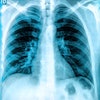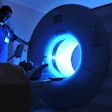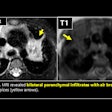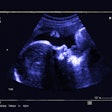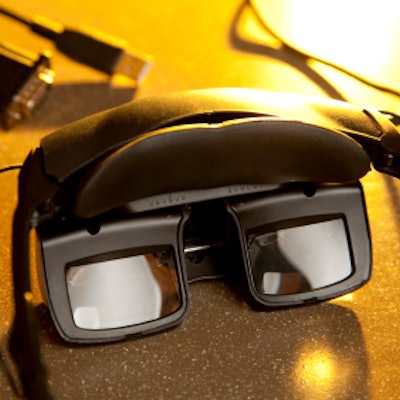
Virtual reality (VR) technology could significantly improve the patient experience during MRI scans and help to mitigate claustrophobia, according to research from a top U.K. facility presented at the International Society for Magnetic Resonance in Medicine (ISMRM) virtual conference.
 Kun Qian, PhD, of King's College London.
Kun Qian, PhD, of King's College London.A team from King's College London has developed an MRI-compatible VR system for use during brain imaging and tested it on nearly 30 adult and pediatric patients. All participants provided positive feedback on the immersive aspects of the system, explained presenter Kun Qian, PhD, a postdoctoral researcher in the Center for the Developing Brain within the School of Biomedical Engineering & Imaging Sciences.
In addition to addressing patient claustrophobia, "a further opportunity could be as a platform for a new generation of 'natural' fMRI (functional MRI) experiments, such as studying fundamental cognitive processes," he said.
Noisy, claustrophobic environment
The MR scanning suite is often noisy and claustrophobic, making it challenging for many subjects to receive MRI and impeding imaging in vulnerable patient populations, noted Qian. Traditional methods for alleviating anxiety, such as patient education and audio entertainment, provide only limited relief, he added.
The researchers hypothesized that replacing the patient's visual scene with appropriate and engaging content could substantially mitigate claustrophobia. "And making their visual experience congruent with physical sensations could further reduce stress by achieving an integrative experience," he said.
The fully MRI-compatible VR system is for designed for use during brain imaging applications. The system comprises an MRI-compatible projector and a 3D-printed mounted headset that includes two infrared eye-tracking cameras and active noise-canceling headphones -- all integrated into a 32-channel head coil.
"Subjects are immersed in the virtual environment as soon as they are placed in the head coil," Qian said. "The visual presentation is continuous until removal from the coil at the examination end."
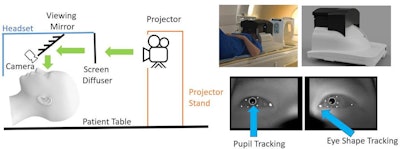 The virtual reality system is integrated into a head coil and is controlled by eye tracking. All images courtesy of Kun Qian, PhD.
The virtual reality system is integrated into a head coil and is controlled by eye tracking. All images courtesy of Kun Qian, PhD.Real-time, interactive control
Real-time eye-tracking and gaze estimation are used to control the system. A third camera in the MRI suite monitors the scanner bed position, while a fourth camera equipped with a microphone is positioned outside of the MRI suite and provides an interactive video feed with the patient's carer.
Patients can choose from gaze-controlled games or videos. They can also call in the carer via gaze control or by verbal request. The carer will then appear as a pop-up video within the patient's user interface. In addition, the virtual reality content is synchronized with movement of the patient bed during both the beginning and ending of the procedure.
The researchers tested their VR system on 22 adult volunteers. All of the participants were able to finish the test task and 16 with normal eyesight succeeded on their first attempt. However, six subjects with corrective lenses needed several attempts to master the system.
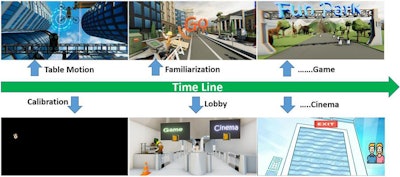 The user experience during a MRI exam with the virtual reality system.
The user experience during a MRI exam with the virtual reality system.Qian noted, though, that 19 of the participants reported that the dynamic marker that shows the current gaze location tended to cause eye strain. Nonetheless, all subjects gave positive verbal feedback on the system, especially for its strong immersive experiences.
"Importantly, they were not aware of their position relative to the scanner bore while using the system," he said, adding that in further testing of the system with six children, all participants also provided positive reviews.
More testing needed
The researchers noted that their system is still at an early stage of development, and larger-scale testing is needed. "So far, all features appear viable, but objective, unbiased testing is a challenge and we're exploring how best to do this," he said.
Gaze control appears to be intuitive and effective, but eye strain is a clear potential issue, Qian acknowledged. Additional options such as hand tracking are being considered to enrich the interactive experience. Quantitative analysis on the system's cost-effectiveness also needs to be performed.
